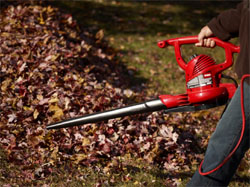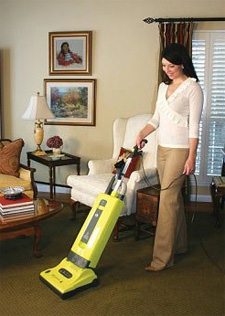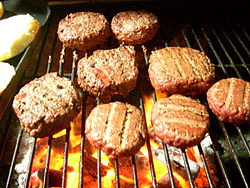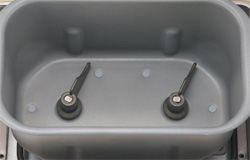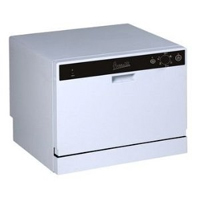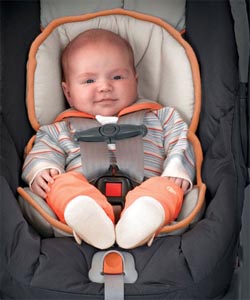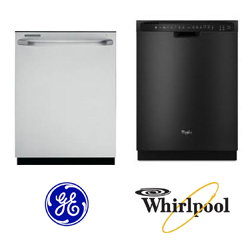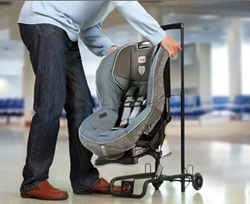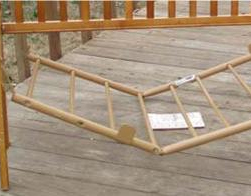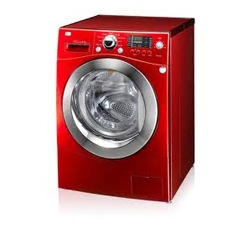Choosing a Leaf Blower: Gas, Electric, or Cordless?
You have a yard that requires a lot of work throughout the year. Raking, gathering, and bagging leaves is a tough, time-consuming task. A leaf blower can greatly aid you in your landscaping duties. Additionally, it’s useful for sweeping off patios, pool decks, and driveways quickly. I’m sure we’ve all had unexpected company over and wished we could make the walkway and front lawn look presentable at a moment’s notice.
If you’re considering buying a leaf blower, you have to decide if you want a gas, electric, or cordless version. Each kind has its pros and cons. It’s up to you to decide which kind best suits your yard’s needs.
Gas
Gas-operated leaf blowers are very powerful but they’ve gotten a bad rap over the years because of the smelly fumes they release and the hassle of mixing gas and oil to run them. However, modern gas blowers have gotten better at controlling their emissions, vibrations, and noise, making them a perfectly viable option.
Pros:
- With no power cord, you have the freedom to move all over the yard. This is especially useful if your lawn is expansive.
- Gas blowers are typically very powerful, able to blast away all sorts of debris, including wet leaves.
- Gas blowers come with variable speeds, allowing you to tackle yard tasks both simple and complex.
- Backpack leaf blowers are available for the extra-large lawns so the user doesn’t get tired arms.
Cons:
- As with any tool or appliance that runs on gas, you’ll be required to purchase fuel over the leaf blower’s lifespan.
- Gas blowers require regular maintenance, including the mixing of gas and oil in proper proportions.
- Some models are difficult to start up or have a complicated series of steps, including a fussy pull cord.
- Gas blowers are generally more expensive, heavier, and noisier than other types of blowers. Neighbors may complain about the racket, and some communities have noise regulations.
Electric
Electric leaf blowers are praised for being environmentally friendly because they don’t run on fuel or release emissions. They are an economical purchase, especially if you have a small yard. Electric models are still powerful machines.
Pros:
- Electric leaf blowers are lightweight, sparing your arm and hand a lot of fatigue.
- They are easier to start than gas blowers: You just plug it in and go.
- There is less maintenance involved with electric models, and they don’t produce noise and air pollution.
- Many models come with vacuum and mulching attachments for versatility in lawn care.
Cons:
- You are hampered by the power cord that electric blowers need in order to run. If you have a large yard, maneuvering the cord could be a nuisance.
- As with any appliance that runs on electricity, there is always the slim possibility of an electrical shock.
Cordless
Cordless leaf blowers seek to find a compromise between gas blowers, which have the greatest mobility, and electric blowers, which are lightweight and don’t require fuel. Cordless blowers are ideal for families with small yards who need a blower for only light tasks like sweeping off decks and sidewalks.
Pros:
- As with a gas blower, you are unimpeded by a cord with a cordless blower. Provided the battery lasts long enough, you can cover your whole yard.
- Cordless models are generally compact and lightweight, making them easy to wield for extended periods of time.
Cons:
- They are not as powerful as gas or electric blowers and are best suited to light tasks.
- Cordless blowers have a limited battery life. The higher the speed, the shorter the battery lasts. Again, if you have a small yard, this shouldn’t be a big issue, but you don’t want to try covering a large property with a cordless blower because it lasts only so long on a single charge.
 |
Brittany Rowland researches new developments in Appliances, Kitchen and CE products features with a vigor to which few would aspire… but someone has to do it. See more about Brittany |
Related Top 10 Lists
Top 10 Leaf Blowers
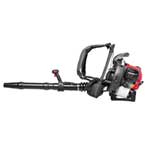
The best leaf blowers, be they gas, electric, or cordless, must be effective at blasting away leaves, twigs, and other lawn debris. We looked for a number of factors when selecting the top 10 leaf blowers: Easy to start up, Powerful engine with high air speeds, Durable mulching blades… [more]
Best Mascara
Top 10 Rated Mascara Rating and Reviews 2026
By Lane Reid
I’ve compiled a list of my following Top 10 Mascaras that should appeal to everyone from the budget shopper to those wanting the highest quality mascara at any price. The criteria for my choices are as follows:
– A smooth application of the mascara
– Volume Building/Volume of Application
– Price/Value
– Time of Application
– Waterproof or not
– Hold once applied
– Ease of Application
– Not Flaking or Smudging once Applied
|
Several shades |
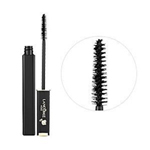 One of these tubes is sold every three minutes and is one of the best selling mascaras on the market. This award-winning formula goes on very evenly due to its unique brush applicator. The brush has specially grooved bristles…
One of these tubes is sold every three minutes and is one of the best selling mascaras on the market. This award-winning formula goes on very evenly due to its unique brush applicator. The brush has specially grooved bristles…
read more
|
Originated in 1970 |
 This familiar pink and green tube of mascara is a classic that comes with it’s own cult following. It has been in many a makeup bags since the ’70’s! The brush is easy to use, allowing…
This familiar pink and green tube of mascara is a classic that comes with it’s own cult following. It has been in many a makeup bags since the ’70’s! The brush is easy to use, allowing…
read more
|
Vitamin B5 in formula helps hydrate lashes |
 This mascara isn’t just a pretty package, it delivers gorgeous lashes as well. The brush is a unique design that separates the lashes like no other while delivering just the right amount…
This mascara isn’t just a pretty package, it delivers gorgeous lashes as well. The brush is a unique design that separates the lashes like no other while delivering just the right amount…
read more
|
Lengthens, defines, adds volume |

Here is a mascara that delivers a faux-fringe look like no other! This formula does it all, lengthens, defines, and adds volume. The application of this product is…
read more
|
Inexpensive |
 oluminous indeed! If you are looking for an inexpensive mascara that offers some serious volume for maximum lash building be sure to try this one…
oluminous indeed! If you are looking for an inexpensive mascara that offers some serious volume for maximum lash building be sure to try this one…
read more
|
No smudging, clumping, or flaking |
 Here is the original tube technology mascara. Unlike conventional mascaras that are painted on, Blinc forms tiny water-resistant “tubes” around the lashes…
Here is the original tube technology mascara. Unlike conventional mascaras that are painted on, Blinc forms tiny water-resistant “tubes” around the lashes…
read more
|
Favorite among makeup artists |
 This popular mascara is a favorite of many makeup artists and has a very loyal following.The extra large brush allows for voluptuous lashes that…
This popular mascara is a favorite of many makeup artists and has a very loyal following.The extra large brush allows for voluptuous lashes that…
read more
|
For those with thin/short eyelashes |
 For those of us that were not blessed with either long or thick lashes, this mascara is a life saver! Not only is this mascara inexpensive but with the mascara…
For those of us that were not blessed with either long or thick lashes, this mascara is a life saver! Not only is this mascara inexpensive but with the mascara…
read more
|
Rivals fake lashes |
 I think the name says it all when it comes to this mascara. Put the false lashes back in their case! This formula lengthens and adds volume …
I think the name says it all when it comes to this mascara. Put the false lashes back in their case! This formula lengthens and adds volume …
read more
|
Refills sell for $26 |
 After the initial investment the refills sell for $26.00. What exactly is this splurge of a mascara? Well for starters, it’s refillable. It also has…
After the initial investment the refills sell for $26.00. What exactly is this splurge of a mascara? Well for starters, it’s refillable. It also has…
read more
 |
After graduating from the International School of Skin and Nails esthetics program in Atlanta, Lane Reid has diversified herself in the beauty industry over the last 12 years. She is originally from Canada and has been living in Atlanta… See more about Lane |
Related Mascara Articles
The History of Mascara is old as the Ancient Egyptians

Mascara is a cosmetic that is used to define, lengthen, darken and add volume to the lashes. It is one of the oldest known cosmetics dating back to 4000B.C. when the Egyptians first started using a homemade version of various ingredients including kohl, crocodile stool and honey… [more]
How to Apply Mascara: 5 Steps for Proper Application
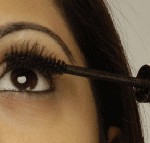
Proper application of a mascara can not only enhance the lashes to their fullest potential but also stretch the life of your mascara as well. If you are using a lash curler be sure to curl them first before applying mascara… [more]
How to Choose the Best Mascara for Your Lashes

With so many different brands and formulas to choose from, selecting a mascara isn’t always an easy task. Lash assessment is key. Figuring out what type of lashes you have and the look you are trying to achieve are the most important steps… [more]
Related Top 10 Lists
Best Fragrance

Women’s fragrances are of course a huge matter of personal preference and with so many to choose from, selecting a mere 10 was challenging. We looked at a lot of different aspects involved in choosing the scents that make up our top 10 list… [more]
Best Face Cream
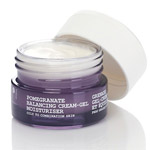
Facial moisturizers should enhance an individuals skin type creating balance and proper hydration. From normal to oily there are some amazing formulas to choose from on this top 10 list! The selections for this category were chosen… [more]
8 Tips for Better Vacuuming
Vacuuming the house can be a tedious chore, but there are practices that will improve the efficiency of your vacuum cleaner and maybe cut down the number of times you have to pull out the device.
1. Vacuum areas with heaviest foot traffic most frequently.
To keep your carpets looking fresh and plush, you should get in the habit of vacuuming at least once or twice a week. The most heavily trafficked areas should get your most attention, with about seven back-and-forth strokes. The remote areas of the house only need about three to four strokes to be adequately cleaned. Some vacuum models have a dirt sensor that lets you know when a section of carpet is thoroughly cleaned.
2. Change the bag when it’s no more than three-quarters full.
Many bagged vacuum cleaners have a full-bag indicator. Regardless, you should check the bag before each use and change it when it reaches the specified height, or about three-quarters of the way full. Vacuuming up pet hair, for instance, will require you to change the bag more frequently.
3. Adjust the vacuum height for different carpets.
To get the most thorough suction power and to make the vacuum cleaner easy to push, adjust the height for different pile carpets. The higher the pile of the carpet, the higher the setting you should use.
4. Clean or replace the filter as recommended by the manufacturer.
You need to check the condition of the filter about every six months. Some filters you can simply wash clean; others need to be replaced, particularly if they’re torn or extremely dirty. It can be expensive replacing the filter, but it’s what keeps your vacuum cleaner running effectively.
5. Turn off the agitator brush to clean delicate rugs.
Your beautiful Oriental rug needs special care to retain its quality. With an upright vacuum cleaner, turn off the agitator brush or tip the head of the vacuum up to avoid catching the fringe in the brush. If you have a canister vacuum cleaner, use the bare-floor setting and the upholstery attachment for the gentlest treatment.
6. Give the vacuum cleaner a quick inspection before taking it in for repairs.
If your vacuum cleaner isn’t picking up as much dirt as it used to, there’s usually a simple solution that you can perform yourself without taking the machine in for costly repairs. With a screwdriver you can easily check the belt to see if it’s broken or worn down. Check to see if the bag or canister is full or if a hose is clogged. Sometimes new carpet causes vacuuming difficulties because the great amount of fibers can clog the air flow.
7. Dust before vacuuming.
Save yourself the trouble of cleaning the same area twice. Dust tables, bookcases, blinds, and windowsills first, so any dust that falls to the ground can be vacuumed up next.
8. Clean the brush attachments regularly.
Not only do brushes with snarled hair caught in its bristles look unattractive, they can grow worn and stiff and leave marks in your carpet. Change the brushes as needed.
 |
Brittany Rowland researches new developments in Appliances, Kitchen and CE products features with a vigor to which few would aspire… but someone has to do it. See more about Brittany |
Related Top 10 Lists
Top 10 Vacuum Cleaners
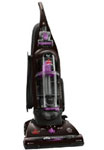
The best vacuum cleaners are durable but lightweight enough to swivel around and under furniture. They should get up dirt close to walls, on stairs, and in tight spaces. See the vacuum cleaner comparison and ratings below with a link to the full review of each…. [more]
Top 10 Stick Vacuum Cleaners
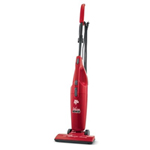
A stick vacuum is ideal for spot cleaning hardwoods, rugs, and thin carpets. You should not expect the performance of a full-size vacuum, however. We chose our top 10 stick vacuums based on the following qualities: Good suction, Handles hardwoods and carpets, Wheels don’t scratch hardwoods, Dirt cups transparent and easy to empty with minimal mess…. [more]
Top 10 Mini Vacuum Cleaners
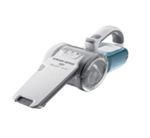
Mini hand-held vacuum cleaners are a convenient tool for cleaning up crumbs, stains, and pet hair quickly without lugging out the full-size vacuum. We chose 10 mini vacuums on the basis of the following traits: Lightweight and easy to maneuver, Easy to clean out the bag/dust container and filters, Powerful suction and thorough cleaning… [more]
The Basics of Grilling: Knowing When to Use Hot or Low Temperatures
While there are now high-end grills that feature no shortage of special tools, precise controls, and convenient accessories, the basic principles of grilling have not changed much over the years. Grilling food perfectly takes skill, attention, and practice. Professional and amateur chefs alike take great pride in their grilling prowess.
The basic challenge lies in knowing how best to grill different foods. You’ll find that there are different practices for cooking chicken, steak, fish, vegetables, pizzas, and other items. Some must be grilled fast and hot, while others require a slow, low heat.
Your grill may have an integrated temperature gauge that shows you the precise internal temperatures. Even if it doesn’t, there’s a trick for gauging how high or low the heat is: by holding your hand just over the grates and counting how many seconds pass before you pull it away.
| 5 seconds | Low heat |
| 4 seconds | Medium heat |
| 3 seconds | Medium high heat |
| 2 seconds | High heat |
| 1 second | Super high heat |
Cooking at high heat
Thin meats, like hot dogs, burgers, kebabs, steaks, and pork chops, are best grilled fast and hot. At these settings, it’s important to keep a close eye on the grill to avoid burning your food. Flip the food as needed and move it around the grill to get the best grill marks. Shifting food around not only takes advantage of your grill’s cooking space, but it also helps prevent flare ups.
These spurts of flame are not wholly avoidable, however. Whenever greasy foods drip their juices down into the grill, flame ups can occur. Don’t panic, just move the food out of the way.
Cooking at low to medium heat
Certain foods like fish, vegetables, chicken, and fruit require a low to medium heat and take longer to cook. With a gas grill, it’s easy to simply keep the dials turned down low. For a charcoal grill, however, you’ll need to create a small fire to begin with.
When you have a large piece of meat that needs a long time on the grill to cook all the way through, it’s best to set it on one side of the grill with the heat coming from the other side. This indirect method of cooking lets items like whole birds, ribs, and roasts bake thoroughly without getting a charred outside.
 |
Brittany Rowland researches new developments in Appliances, Kitchen and CE products features with a vigor to which few would aspire… but someone has to do it. See more about Brittany |
Related Top 10 Lists
Top 10 Gas and Propane Grills
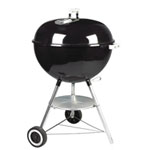
There are a wide range of grills, from gas to electric, portable to tank-like models. The most important aspect of a grill, however, is its cooking performance: A grill should produce a juicy, flavorful steak or burger with a nicely seared exterior… [more]
Top Charcoal Grills

There are a wide range of charcoal grills from portable to stand alone models. The most important factor in choosing the best charcoal grill is the cooking performance. Some prefer charcoal over propane or any other type of gas because of the flavor… [more]
Top Electric Grills
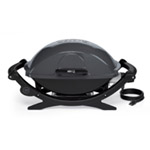
Electric grills are a great alternative to grills that are in constant need of a fuel source. They are also perfect for those living in apartments or condos that don’t allow open flames… [more]
LG UDTV 4K TV Review
LG has introduced a new macdaddy, spanking hot $22,000 84 inch UDTV (ultra high definition TV) that will be shipped fall of 2012. It will not only be one of the larges TVs on the market but is also the highest definition at 3,820 X 2,160. The abreviation for this resolution is 4K to differentiate it from 1080 or let you know that it is 4 times the 1080p resolution specification. We viewed the 4K specification TV at the Sharp booth at CES and were very impressed by it. The 8K television was even more impressive – rendering a better-than-3D type effect.
Upconversion Processing
What was and is interesting is how the signal is being up-converted to 4K from that measly full HD 1080p signal. The Sharp handled this up-conversion but we are not sure yet about the LG. There are some Blu-Ray players on the market that will up-convert the signal, namely the Sony BDP-S790.
But really there is no reason the TV cannot contain the up-conversion technology within. At $22,000 they should be able to afford the best in this processing. Consider that the aforementioned Sony Blu-Ray only costs $250 and has this technology.
The up-conversion technique used by Sharp worked well and produced a great picture, however the images on screen were barely moving.
Maintenance Tips for Your Breadmaker
Cleaning and maintaining a breadmaker is a fairly simple task, but keeping up with it can guarantee years of top-notch performance from your appliance.
- Most people choose to clean the breadmaker right after making a loaf. The most basic safety tip to remember: Always unplug the machine before sticking your hand inside it to clean. Also, give the breadmaker some time to cool down, as the bread pan gets very hot during use.
- The bread pan is the part of the machine that gets the messiest because it’s where the dough is kneaded and baked. Pull the bread pan out by the handle and wash it thoroughly with warm, soapy water. Use soft rags or sponges rather than scouring pads and abrasive chemicals, which can damage the surface of the pan.
- Check the user’s manual to see if the other breadmaker parts, like the kneading paddles, are safe to go in the dishwasher. If not, let them soak for about a quarter hour before washing them by hand. Any baked-on food should come off easily after the soaking.
- Use a rag or sponge to clean out the inside of the breadmaker. Be careful washing around the heating element so as not to jar it loose.
- Let the interior of the breadmaker and all the parts dry completely before reassembling the machine.
 |
Brittany Rowland researches new developments in Appliances, Kitchen and CE products features with a vigor to which few would aspire… but someone has to do it. See more about Brittany |
Related Top 10 Lists
Top 10 Breadmakers
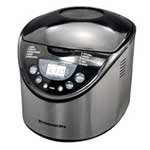
While your needs may vary based on your family size, experience level, and expectations from your breadmaker, this selection of the top 10 breadmakers offers a wide array of features…. [more]
How to Choose the Best Dishwasher for your Needs
Depending on your kitchen space and how many dishes you go through each day, you may find one particular type of dishwasher—a regular built-in, an 18 inch, or a countertop—works best for you. Each kind of dishwasher has its pros and cons, but you can typically find a quality performer in any variety. The key consideration is space.
Countertop
If you live in a small apartment or an RV, then you know you have minimal kitchen space. Or, if you’re single or retired, you don’t use many dishes throughout the day. In these cases, a countertop dishwasher is the best choice. Only 17 inches tall, it fits on the counter, usually squeezed in under a cabinet. A countertop dishwasher includes all the basic functions of a regular dishwasher but in a much smaller box-like structure. They typically hold 4 place settings and can wash a full load with about 2 gallons of water—that’s much more efficient than washing them by hand.
Pros
- Washes a small volume of dishes efficiently
- Takes up little space
- Portable
Cons
- Requires you to hook it up to sink with a hose each use
- Still pricey—could be more cost effective to go with larger model
Built-in
The standard form of dishwasher, the built-in models are permanently installed under a countertop and are typically 24 inches wide. Couples and families who go through a lot of dishes each day will appreciate the large capacity of built-in dishwashers, which can hold up to 16 place settings. Tall tub dishwashers in particular have great capacity because they maximize the space for dishes inside the outer “box.”
Pros
- With several cycle options, dishes are cleaned in the most efficient manner
- Typical lifespan is 9 to 12 years
- Come in a variety of colors and styles to match any kitchen décor
- Many offer sanitizing cycles that eliminate bacteria
Cons
- More special features can mean more mechanical problems
- Professional installation may or may not be offered with purchase
18 inch
People who like the convenience of a full-size dishwasher but don’t have a lot of kitchen space may be happiest with an slimline 18-inch dishwasher. They’re essentially the same as a standard 24-inch dishwasher, but narrower by 6 inches. Even if you don’t have space under the cabinets for a built-in model, portable dishwashers are also available. They can be easily stored in a closet and rolled out for use.
Pros
- Innovative features squeeze a lot of dish space in to a small package
- As effective at cleaning dishes as full-size dishwashers
- Portable option
Cons
- Washing pots and pans leaves no room for other dishes—may double number of loads
 |
Brittany Rowland researches new developments in Appliances, Kitchen and CE products features with a vigor to which few would aspire… but someone has to do it. See more about Brittany |
Related Articles
Stainless Steel Dishwashers: Stylish and Sanitary
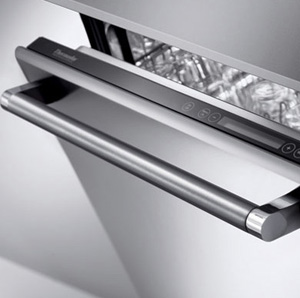
More families today are choosing stainless steel dishwashers because they lend a professional, sophisticated look and imitate the kind that real chefs use. To accommodate this demand, several top dishwasher manufacturers… [more]
Buying a Dishwasher: Is it Better to Shop Online or at the Store?
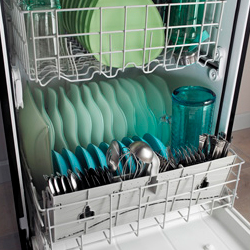
As you begin your search for a new dishwasher, you’re probably considering a couple important question: How can I find a high-quality model at a reasonable price? With dishwashers, you tend to get what you pay for, so unless you’re on a tight budget you should consider the performance of the less important models. You may save a couple hundred dollars…[more]
8 Steps to Saving Energy with your Dishwasher
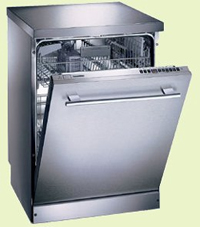
Everyone wants a dishwasher that cleans and sanitizes dishes effectively. In today’s environmentally conscious world, many people also want to save energy with their dishwasher. With just a few minor adjustments to how you operate the machine, you can save considerably on energy costs…[more]
Related Top 10 Lists
Top 10 Dishwashers
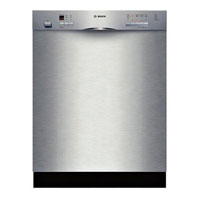
To compile our top 10 list for dishwashers, we took several factors into consideration, such as cleaning performance, sanitizing options, attractiveness, size and capacity, ease of use, decibel level, and number of wash cycles. Today’s dishwashers have become increasingly sleek and streamlined in design, often in a variety of … [more]
Top 10 Countertop Dishwashers
Countertop dishwashers are by design smaller and more compact, holding at most six place settings. To select the top 10 dishwashers, we considered capacity, water consumption, durability, color options, wash cycles, and cleaning performance… [more]
Should I buy a laptop for my child?
Does my child need a laptop for school?
Technology has change immensely in the past few years alone and now more than ever you see a 10 year old walking down the street with an iPhone in hand. Who are you calling? Are you texting your friends? What need could a young child possibly have for technology like that. Even yet, what about a laptop or a computer of their own. Does a middle-school or high-school student even need a laptop or desktop?
A computer is a very valuable thing. Along with the internet a person can access libraries full of endless information. With that availability of information comes also the risk of inappropriate content we don’t want our children to see. Which is why we believe so many parents are against getting their children a laptop or desktop for school. But this content can easily be blocked with the right tools.
Elementary School (Kindergarden – 5th Grade)
Your child is definitely too young for a computer. School assignments wont require them to use the internet for research and if it does, they can simply use yours. This age is a little young, even up to 5th grade, to have their own dedicated computer.
Middle School (6th – 8th grade)
Your child is older now and is learning more. Workload at school increases and more essays are due including research online and use of Word Processing. Even Power Points and Excel become used in middle school. Some schools provide computers which is fine, and at home if you have a computer your child can use it too.
Is it critical that your middle school student have his or her own laptop/desktop? No. They can simply share one at home with you. But we would say it’s useful to have a ‘family’ computer that everyone in the family can share, including your middle schooler. This allows you to monitor what they are doing and make sure they are on task.
Highschool (9th Grade – 12th grade)
Absolutely. Your student is a young adult and high-school involves heavy work on computers. A lot of high-schools don’t allow students to use laptops in school, but your child can still bring the laptop to a coffee shop or to a friends to do homework.
Your child can also use the laptop to communicate with teachers via email, contact other students and communicate with them about homework/deadlines/etc. A laptop is a must for a high-school student by at least 10th grade. It teaches both responsibility (of owning an expensive piece of electronics) and helps them get their schoolwork done.
College
Your child NEEDS a laptop for college. Don’t let them leave without one! Pretty much anything and everything revolves around the internet in college. Turning course-work in, online classes, contacting professor via email, signing up for classes/clubs online, viewing schedules, paying for school, and so on.
A laptop is VITAL to a college students success. Again, do not let your child leave for college without a laptop!
In review, a laptop is a great idea for a high-schooler and a necessity for college students. Any younger and your child can simply share a ‘family’ laptop. Laptops are powerful machines and no longer cost an outrageous amount. Be sure to check out our Top 10 Laptops for Students for ideas on which laptops would be best for your child.
Other Articles on Laptops
Top 10 Laptops for Students 2012
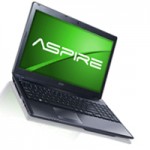
Whether your child is in high-school or college, these days some sort of computer is needed. Laptops are generally your best choice as it offers portability so your child can bring it with him to class to take notes, complete homework at a coffee shop, and be on the go with his/her school work…. [more]
Laptop Safety Tips

Your laptop is an expensive piece of equipment, you need to take care of it. If your child owns one, show them this article so they can practice good technique in protecting expensive hardware. There is more than you think to just protecting the outer shell of your laptop… [more]
How do I choose the right laptop for my needs?
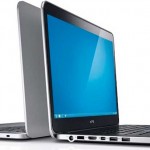
Maybe you aren’t too familiar with computers and technology. It’s understandable, in this day and age everything is digitized. Our mail, communication, banking, you name it. We have no choice but to adapt with the changing of times. A laptop is essential for anyone in this world. But how does someone with little technological expertise pick the right laptop? Whats a good laptop for my needs?… [more]
Best Women’s Backpacks
Top 10 Rated Backpacks for Women 2026
By S. Dee Davis
Following are some of the primary factors we considered when selecting our top 10 backpacks for women list. Please see our complete backpack buying guide for more information on how we chose, and you should choose the right backpack for your hiking or camping adventure.
1. Comfort and Wearability
2. Volume Capacity
3. Weight Efficiency
4. Compartmental Features
5. Hydration Capabilities
6. External Straps and Stability Features
7. Frame Support
8. Cost/Value
| Osprey Ariel 75 |
|
Internal frame |
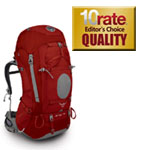 “300 days in the field and still looks like new. It’s indestructible.” – Actual quote from an actual outdoor therapeutic counselor. That about sums it up.
“300 days in the field and still looks like new. It’s indestructible.” – Actual quote from an actual outdoor therapeutic counselor. That about sums it up.
Prices
|
|
| Arc’teryx Altra 62 |
|
Internal Frame |
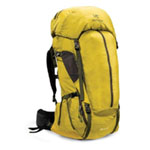 The priciest one on the list, but it’s loaded with features and extremely comfortable. A unique pivoting hipbelt has reviewers buzzing. Be cognizant of the sometimes-leaky zippers, though, and be sure to take a waterproof pack cover.
The priciest one on the list, but it’s loaded with features and extremely comfortable. A unique pivoting hipbelt has reviewers buzzing. Be cognizant of the sometimes-leaky zippers, though, and be sure to take a waterproof pack cover.
Prices
|
|
| The North Face Crestone 60 |
|
Internal Frame |
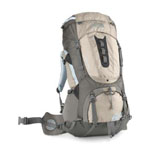 The North Face Crestone 60 will probably be one of your best friends on the trail. A 60 liter capacity is ideal for multiple night trips. Features included on the bag ensure a perfect fit which means you’ll be a happy hiker out on the trails.
The North Face Crestone 60 will probably be one of your best friends on the trail. A 60 liter capacity is ideal for multiple night trips. Features included on the bag ensure a perfect fit which means you’ll be a happy hiker out on the trails.
Prices
|
|
| Gregory Deva 70 |
|
Internal frame |
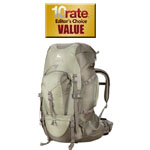 Gregory’s patented Response AFS suspension system joins forces with a pre-curved hipbelt that works to eliminate hot spots and chafing around the waist. It also has a thermomolded back rest and three access points, making quick retrieval of gear a snap. It’s a little on the weighty side, but there’s nothing we could find wrong with this pack.
Gregory’s patented Response AFS suspension system joins forces with a pre-curved hipbelt that works to eliminate hot spots and chafing around the waist. It also has a thermomolded back rest and three access points, making quick retrieval of gear a snap. It’s a little on the weighty side, but there’s nothing we could find wrong with this pack.
Prices
|
|
| REI XT 75 |
|
Internal Frame |
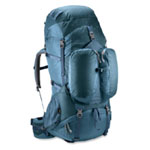 A good basic entry-level pack, the good folks over at REI built this one with women-specific shoulder straps and hipbelt as well as a shortened torso. It’s got enough capacity for a week-long outing but is light enough for just an overnight.
A good basic entry-level pack, the good folks over at REI built this one with women-specific shoulder straps and hipbelt as well as a shortened torso. It’s got enough capacity for a week-long outing but is light enough for just an overnight.
Prices
| Lowe Alpine Nanon ND |
|
Super lightweight |
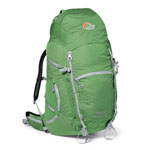 This super-lightweight model is a little on the small side, but it’s got woman-specific padding on the back and shoulder straps and carries like a feather.
This super-lightweight model is a little on the small side, but it’s got woman-specific padding on the back and shoulder straps and carries like a feather.
Prices
|
|
| Kelty Coyote 75 |
|
Internal frame |
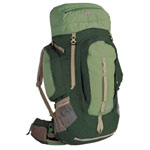 It has the capacity to carry a huge load, but the waistbelt is disproportionately large and causes all the weight to hang from the shoulders if you can’t figure out a way to artificially expand your hips. Overall, its a comfortable pack and a perfect alternative to many of those large capacity backpacks.
It has the capacity to carry a huge load, but the waistbelt is disproportionately large and causes all the weight to hang from the shoulders if you can’t figure out a way to artificially expand your hips. Overall, its a comfortable pack and a perfect alternative to many of those large capacity backpacks.
Prices
|
|
| Black Diamond Astral 40 |
|
38-40 liters |
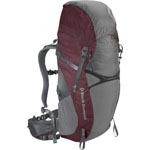 The Black Diamond Astral backpack comes in as one of the smaller bags on the list. At 40 liters this bag is perfect for solo-overnights or multi-day hikes when accompanied by others. The pack will perform best when loaded with 20 to 30 pounds, so that limits this backpack a little.
The Black Diamond Astral backpack comes in as one of the smaller bags on the list. At 40 liters this bag is perfect for solo-overnights or multi-day hikes when accompanied by others. The pack will perform best when loaded with 20 to 30 pounds, so that limits this backpack a little.
Prices
|
|
| REI Crestrail 65 |
|
Internal frame |
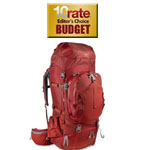 The second offering from REI on the list, it’s a solid pack that just lacks some of the cachet of the bigger names. It features a slim width and shortened height along with accoutrements like dual ice axe loops and bottle locking side pockets. Unfortunately, it’s not as well-designed as the others on this list, with access problems stemming from small apertures and balky zippers.
The second offering from REI on the list, it’s a solid pack that just lacks some of the cachet of the bigger names. It features a slim width and shortened height along with accoutrements like dual ice axe loops and bottle locking side pockets. Unfortunately, it’s not as well-designed as the others on this list, with access problems stemming from small apertures and balky zippers.
Prices
 |
As an avid golfer and tennis player for most of his life, he enjoys researching the latest in golf and tennis technology as well as analyzing his own game. He has been a writer and reviewer for a dozen years… See more about S. Dee Davis |
Featured Backpacks Articles
What to Take on a Backpacking Trip

As stated already in the buying guide, how much gear you’re carrying will have a huge impact on what kind of bag you use. Here is a rough list of essential things you’ll want with you on a backpacking trip. Depending on … [more]
More Backpacks Top 10 Lists
Top 10 Men’s Backpacks
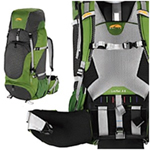
Following are some of the primary factors we considered when selecting our top 10 backpacks (for men) list. Please see our complete backpack buying guide for more information on how we chose, and you should choose the right backpack for your hiking or camping adventure… [more]
How do I choose the right laptop for my needs?
What specs does my laptop need? What makes a laptop good?
Maybe you aren’t too familiar with computers and technology. It’s understandable, in this day and age everything is digitized. Our mail, communication, banking, you name it. We have no choice but to adapt with the changing of times. A laptop is essential for anyone in this world. But how does someone with little technological expertise pick the right laptop? Whats a good laptop for my needs?
School-Work/Internet Browsing
For school-work the most your going to need to do is some word processing to write essays, designing slide-shows with a Power Point software, internet research, and so forth. Luckily a very basic laptop will be able to handle all the above. You don’t need a fancy graphics card or blazing fast CPU to accomplish school-work.
Look for a decent processor. Any of the Intel i3 or i5 processors are great for a school students laptop. They are fast enough to multitask yet not expensive. Look for at least 4GB of RAM in your laptop, this will allow you to multitask. You can have multiple windows open when researching the internet, typing your essay in Word, and listening to iTunes all at the same time. The more RAM you have, the more your able to multitask essentially. Anything over 4GB won’t hurt, but for basic schoolwork and internet browsing it would be overkill.
Something like this would also work well for just an at home ‘family’ computer used for basic web surfing and office applications.
Gaming and Performance
If your looking for a laptop that plays games you will obviously need a more expensive and powerful machine. Just about every component will need to be more powerful. Your processor should be either an Intel i5 and i7 (with i5’s more common in laptops) – the 2nd generation Sandy Bridge processors are a great choice.
When looking at RAM, you will want at least 6GB, with 8GB being the best choice. The next most important component that sets gaming laptops apart are its graphics card. Most normal laptops have integrated graphics, due to the simple fact that fitting a big bulky graphics card into a laptop isn’t really doable. But some gaming laptops have custom graphics cards made just for laptops.
These aren’t the most powerful, but they will still get the job done. Look for a a card that has good ratings and is paired with a good processor and plenty of RAM.
The graphics card, RAM, and processor will also help with graphic intensive programs. This includes video editing and 3D editing, and even 2D image editing
The Bottom Line
Laptop prices have dropped significantly for what you can get. The same laptop you can get today for $500 was $1500 4 years ago. Most “budget” laptops priced between $400 and $700 will get you through your basic schooling and web browsing needs with some added fun (AIM, older games, etc) – while a more expensive midline laptop at $800 – $1200 will get you generally a more powerful CPU, RAM, and sometimes a graphics card. The higher line $1300 – $2000 laptops are novelties in their own and you would be much better off getting a desktop if your trying to get that much performance in a laptop. Stick in between $400 and $1200 when buying a laptop and go no higher.
If your not sure what your going to be doing with your laptop or you might need a powerful one in a year, just opt in for a mid-range one that will last. Remember: A good CPU, at LEAST 4GB of RAM, and if your gaming an actual graphics card (not integrated graphics)
Other Articles on Laptops
Top 10 Laptops for Students 2012

Whether your child is in high-school or college, these days some sort of computer is needed. Laptops are generally your best choice as it offers portability so your child can bring it with him to class to take notes, complete homework at a coffee shop, and be on the go with his/her school work…. [more]
Laptop Safety Tips

Your laptop is an expensive piece of equipment, you need to take care of it. If your child owns one, show them this article so they can practice good technique in protecting expensive hardware. There is more than you think to just protecting the outer shell of your laptop… [more]
Should I buy a laptop for my child?

Technology has change immensely in the past few years alone and now more than ever you see a 10 year old walking down the street with an iPhone in hand. Who are you calling? Are you texting your friends? What need could a young child possibly have for technology like that. Even yet, what about a laptop or a computer of their own. Does a middle-school or high-school student even need a laptop or desktop?… [more]
When on the go, Give your Arm a Break with a Light Car Seat
Traveling and taking vacations can be fun, but parents with infants and young kids in tow usually have some extra baggage in the form of car seats. They can be rented, but bringing your own removes the guesswork from wondering what shape the seat will be in when you get it. Dragging along a heavy car seat is too much effort. Some are better than others in terms of being lightweight and ergonomically easy to carry when you detach them from the base.
- The lightest is the Safety 1st Onboard 35, weighing in at just eight pounds. This seat is designed to carry a baby between four and 35 pounds. Factoring in baby plus car seat and doing the math would mean carrying around anywhere from 12 to 43 pounds. Go for any considerable distance carrying this, and after awhile the car seat seems to get heavier and heavier with each step. Some car seats have a zigzag handle for easier, more natural carrying without straining the arm, but this isn’t one of them.
- After that is the Combi Shuttle 33, at just under 9 ½ pounds. Yes it’s light, but the tradeoff to the weight is the handle. Like many other car seats the simple straight-across bar means the fingers are either facing the rear or facing forward when carrying the car seat, instead of the natural position of fingers facing inward.
- The Baby Trend Flex Loc 30 weighs 9.65 pounds and is designed to carry an infant up to 30 pounds. That means you could end up lugging almost 40 pounds with one arm. Walking any extended distance would mean taking frequent breaks to put down the car seat and rest your arm. The triangle handle, advertised as being smooth so as not to scratch the arm, is a little more user-friendly because it allows whoever’s carrying it to change their grip as needed to spare the arm muscles.
- Almost as light is the 9.8-pound Britax B-SAFE, certified for air travel and capable of carrying infants between four and 30 pounds. It’s compatible with Britax “B” series strollers, and cushioned to provide protection from every angle in case of a crash. The B-SAFE is advertised as having an ergonomic handle, but the handle is the standard straight-across bar that forces the arm in an unnatural position to carry it.
- The Orbit Baby G2 is an even 10 pounds and has the same straight-across carry handle as many other car seats, but it seems the manufacturer tries to make up for that in other ways. It has what Orbit calls a 60-second car seat installation feature using its own brand of “StrongArm” mechanism which automatically tightens the seat belts simply by turning a knob. To minimize strain on the back from leaning over while installing the car seat, its “SmartHub” interface lets you place it in the car at any angle.
- Next up is the Italian-made Peg Perego Primo Viaggio SIP 30/30, weighing 11 pounds. The Peg Perego line of car seats is more expensive, but many parents swear by them. This one exceeds the standards set by side impact protection safety tests and is FAA-approved for flying. The handle on this car seat is designed like the one on the Combi Shuttle 33 and the Britax B-SAFE.
The seats get progressively heavier, and on the other end of the scale is the Evenflo Discovery 5 at 12 ½ pounds, The 1st Years Via l470 at 17 pounds, the Chicco KeyFit 30 at 21.1 pounds and the Graco Alano SnugRide 22 at 37.3 pounds. Ironically, the Evenflo brand of car seats are the only ones we saw with the z-shaped handle for easy grip. The handle on the Evenflo Embrace LX has the same type of handle as the Discovery 5 and consumers seem to like it. The tradeoff is the weight – the Embrace is a hefty 14.4 pounds.
| Valerie Baldowski is passionate about writing about everything from childrens safety and juvenile products to gardening tools. She is the mother of a high energy 8 year old child so she is accustomed to researching childrens products and services… See more about Valerie |
Featured Baby Car Seat Articles
Need a Car Seat when Travelling? Make Plans in Advance
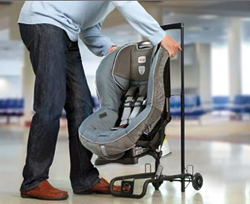
When traveling with babies or young children, finding a car rental agency willing to make the extra effort to find an infant car seat can be a hassle. No doubt parents have a long list of questions. How easy is it to find a reliable rental agency, and how safe are the car seats they have… [more]
Related Top 10 Lists
Top 10 Baby Car Seats
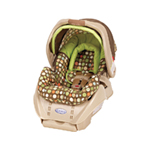
Parents looking for a safe infant car seat have the daunting task of wading through dozens of brands and models to find the one seat right for their child. We compared the seats on the market and chose which ones are the best ones based on safety and workmanship… [more]
Laptop Safety Tips
How to take care of your laptop
Your laptop is an expensive piece of equipment, you need to take care of it. If your child owns one, show them this article so they can practice good technique in protecting expensive hardware. There is more than you think to just protecting the outer shell of your laptop.
Protect the hardware
Your laptop is expensive. Don’t just carry it around without a laptop carrying case. A carrying case of some sort for a laptop will ensure that if you drop it, it won’t break! Plus it’s just easier to carry around in. This is the easiest most preventable way to protect your laptop. If your break the hardware, then you broke the software too, because you can no longer access it.
Shut your laptop down
Your laptop should be shut down after each time you use it. This prevents overheating (which can easily melt components within your laptop) and in general just makes your laptop last longer, as it causes less stress on the parts. When your laptop overheats you can receive software failures and if it’s on a cloth surface, you can start a fire or even worst get burnt.
Yes, it’s a laptop, but it shouldn’t go in your lap. Laptops tend to get host fast and you can burn yourself pretty badly by keeping the laptop in your lap. Also don’t sit in bed with a laptop, if you fall asleep with your laptop on and it falls onto the covers, it could cause a fire. Not to mention it WILL overheat and this can damage components over time.
Shut down your laptop correctly
Lots of people simply hold down the power button to shut off their laptop really quick. While this isn’t terrible for the laptop, it can cause some bad issues. It’s better to go through the shut down via your desktop then using a hardware button. Using the “Power button” shuts off power instantly. You can lose documents you were working on, or the worst, your OS could have been installing important software essential to it to run and you shut it off mid install. This can cause HUGE problems and your laptop may not even start because it’s missing files! Take the extra 20 seconds and shut it down from your desktop.
Software is important too
This is obvious but take care of your software too. It runs in conjunction with your hardware (the physical laptop and all the components inside) and if it’s not updated, your hardware can fail. Always updated your OS, Anti-Virus, and any other essential software items vital to the operation of your laptop.
Taking care of the physical appearance of the laptop causes it to run better (no, seriously) – If your laptop is clean and dust free the components will work without error. If you don’t bang it around outside it’s case, no parts will fail. And if it doesn’t overheat, then parts wont melt.
Apply these safety tips and your laptop will last a lot longer then you think.
Related Top 10 Lists
Top 10 Laptops for Students 2012

Whether your child is in high-school or college, these days some sort of computer is needed. Laptops are generally your best choice as it offers portability so your child can bring it with him to class to take notes, complete homework at a coffee shop, and be on the go with his/her school work…. [more]
How do I choose the right laptop for my needs?

Maybe you aren’t too familiar with computers and technology. It’s understandable, in this day and age everything is digitized. Our mail, communication, banking, you name it. We have no choice but to adapt with the changing of times. A laptop is essential for anyone in this world. But how does someone with little technological expertise pick the right laptop? Whats a good laptop for my needs?… [more]
Should I buy a laptop for my child?

Technology has change immensely in the past few years alone and now more than ever you see a 10 year old walking down the street with an iPhone in hand. Who are you calling? Are you texting your friends? What need could a young child possibly have for technology like that. Even yet, what about a laptop or a computer of their own. Does a middle-school or high-school student even need a laptop or desktop?… [more]
Comparing Two Built-In Dishwashers: The GE GLD5868VSS vs. the Whirlpool WDF730PAYB
Two dishwashers for roughly the same price, the GE model at $509 and the Whirlpool one at $498, offer comparable cleaning performance and features. But does one come out ahead when they’re compared side by side?
Size Considerations
The GE dishwasher has a slightly larger capacity, fitting 16 place settings compared to the Whirlpool’s 15. Those are both very generous cavities, capable of holding dishes from a large family meal.
Style and Appearance
As far as appearance goes, both models have very sleek, modern styles in black, white, and stainless steel. The Whirlpool one also comes in bisque, a light creamy brown. The GE dishwasher has a concealed console panel, so the door is blank and clean except for the handlebar. The Whirlpool has a unobtrusive line of buttons across the top. Either style is acceptable, and which is better depends solely on the buyer’s preference.
Wash Cycles
The Whirlpool has two extra wash cycles compared to the GE model but lacks a light cycle or a pots and pans cycle. Both models offer a sanitizing cycle and automatic soil sensors that optimize the washing performance. The Whirlpool dishwasher has eco wash and eco dry settings; the GE model features a steam pre-wash that breaks down dried-on food and grease. Both models include a heated dry that reduces water spots.
Loading Flexibility
Fitting plates and glasses in either dishwasher is made simple with fold-down tines and adjustable racks. Both have nylon-coated tines, which are the best material for durability and gentleness on dishes. The Whirlpool model includes clips to secure small items so they don’t fall out of place or fill with water. Its silverware basket also fits in several locations, which gives you plenty of options for filling the racks to full capacity. GE’s dishwasher secures and protects stemware like wine glasses.
Energy Use and Decibel Level
In these two categories, Whirlpool and GE are equals. Both are Energy Star certified and operate quietly at 55 decibels. That sound level falls between the quiet whispers of a library and normal indoor conversation—not bad for a dishwasher.
The Whirlpool WDF730PAYB and GE GLD5868VSS are both highly efficient dishwashers with great cleaning performance and special highlights. Choosing which one to buy boils down to what kind of wash cycles you prefer. Also, the GE model slightly edges out the Whirlpool one with its larger capacity, the greatest in its class. At around the $500 range, both offer a great deal for their value.
 |
Brittany Rowland researches new developments in Appliances, Kitchen and CE products features with a vigor to which few would aspire… but someone has to do it. See more about Brittany |
Related Articles
Stainless Steel Dishwashers: Stylish and Sanitary

More families today are choosing stainless steel dishwashers because they lend a professional, sophisticated look and imitate the kind that real chefs use. To accommodate this demand, several top dishwasher manufacturers… [more]
Related Top 10 Lists
Top 10 Dishwashers

To compile our top 10 list for dishwashers, we took several factors into consideration, such as cleaning performance, sanitizing options, attractiveness, size and capacity, ease of use, decibel level, and number of wash cycles. Today’s dishwashers have become increasingly sleek and streamlined in design, often in a variety of … [more]
Need a Car Seat when Travelling? Make Plans in Advance
When traveling with babies or young children, finding a car rental agency willing to make the extra effort to find an infant car seat can be a hassle. No doubt parents have a long list of questions. How easy is it to find a reliable rental agency, and how safe are the car seats they have? How easy is it to get a live human being on the phone to inquire about one?
Most if not all car rental agencies are geared towards renting large number of vehicles to make as big of a profit as possible, and the process of car rental is automated. Child safety restraint seats are low on their priority list and some parents report a bad experience trying to get a car seat installed on a rental.
One family who flew from Seattle to San Diego in 2008 with two small children rented a vehicle after getting off the plane, but received dirty car seats with missing parts. When they complained the manager at the rental agency offered them a refund, but no help with the car seats. California law requires children younger than age 8 to be buckled in a car seat, booster seat or in the back seat. When the television media learned about the incident, the resulting publicity forced the agency to take steps to correct the problem. It destroyed the car seats not meeting legal requirements and instituted a companywide child safety seat policy to make sure in the future it would have safe, clean car seats for customers.
To prevent a public relations nightmare like that, many car rental companies have gotten on board with accommodating young passengers.
- Hertz Rent A Car offers customers who are AAA members a free car seat or booster seat with every rental, to give families a break from having to drag along their own car seat through the airport. Non-AAA members receive a discount on the rental of the child safety seats. The seats are subject to availability and parents are asked to call ahead to notify Hertz of a child restraint system request. Customers are responsible for installing the seats themselves.
- Budget Rent A Car offers more of a guarantee, but time restrictions apply. At corporate-owned Budget locations, availability is guaranteed only if the child safety seat reservation is made 48 hours in advance. Rates to rent a car seat vary by location but the average is $10 per day. Parents will need to know how to install the seat themselves, because Budget employees are not allowed to install them.
- Travelers picking up a car seat from Thrifty Car Rental will pay an additional charge on top of their car rental fees, but at least the seats are available. To accommodate older as well as younger kids, the company has infant and toddler seats as well as child and youth booster seats, with or without a back. Like Budget, Thrifty personnel are forbidden to install a car seat for a customer. Instead, customers are given the installation instructions, plus LATCH (Lower Anchors and Tethers for Children) equipment and other accessories, to do it themselves. Upon return of the car seat the rental agency is required to inspect the seat for wear and tear, or broken or missing parts.
- As far as being helpful, the folks at Avis Rent A Car go in the exact other direction with its child safety seat policy. Avis has Evenflo car seats, and the managers are trained to properly install them using the LATCH system. All locations also have foam levelers to make sure the seats are installed evenly and securely.
- Not only does Dollar Rent A Car have car seats and booster seats at all of its locations, but some models of the Dodge Caravans rented there come with built-in child safety seats. Also, back-door child safety locks come standard on most Chrysler vehicles. For details, call the Dollar location where you reserved your vehicle.
It’s interesting to note that Enterprise Rent-A-Car, National Car Rental or Alamo don’t make details of their infant car seat policies readily available on their website. Unlike other car rental agencies that advertise discounts or free car seat rentals for AAA members, they don’t volunteer that information. The best bet is to call their toll-free number and ask, to avoid any surprises when you show up at the counter to pick up your rental car.
| Valerie Baldowski is passionate about writing about everything from childrens safety and juvenile products to gardening tools. She is the mother of a high energy 8 year old child so she is accustomed to researching childrens products and services… See more about Valerie |
Related Top 10 Lists
Top 10 Baby Car Seats
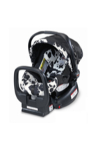
Parents looking for a safe infant car seat have the daunting task of wading through dozens of brands and models to find the one seat right for their child. We compared the seats on the market and chose which ones are the best ones based on safety and workmanship…. [more]
Featured Baby Car Seat Articles
When on the go, Give your Arm a Break with a Light Car Seat
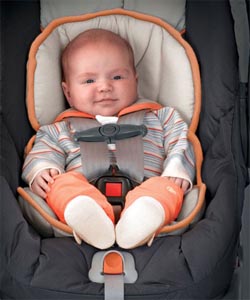
Traveling and taking vacations can be fun, but parents with infants and young kids in tow usually have some extra baggage in the form of car seats. They can be rented, but bringing your own removes the guesswork… [more]
Related Top 10 Lists
Top 10 Baby Car Seats

Parents looking for a safe infant car seat have the daunting task of wading through dozens of brands and models to find the one seat right for their child. We compared the seats on the market and chose which ones are the best ones based on safety and workmanship… [more]
When Crib Shopping, Beware of those Scary Recall Histories
Parents-to-be are swamped with details to take care of before the baby arrives, and one of the most important detail is finding just the right crib. That’s no easy task considering the numerous recalls that have been issued over the years on a number of cribs for various reasons. Proper research will help narrow down the field.
The crib Aunt Martha used to put little cousin Betty Lou to bed every night may not be safe anymore. Older cribs may need repairs, and older models might not meet more stringent federal standards. The sale of drop-side cribs has been banned outright, and not even thrift stores or consignment shops can accept them any more. The best bet is to buy new. There are some safety tips to follow when shopping for cribs.
- One of the most obvious tips is to avoid buying any cribs with a recall history. For example, in May 2011, the U.S. Consumer Product Safety Commission (CPSC) announced a recall of 22,000 Dream on Me Full Size and Portable Drop Side cribs because the drop side rail hardware can break, allowing the drop side to detach from the crib. In April the CPSC announced a recall of more than 300 ducduc Fixed Side cribs because the bottom rails can separate from the sides when the mattress is in the lowest position, causing the mattress to fall.
- The crib slats should be no farther apart than 2 3/8 of an inch. Older cribs are more likely to have slats that are too widely spaced, making it easier for a baby to get wedged in between them.
- Make sure the paint isn’t chipped or peeling. A hand-me-down crib could have fancy finials, cutouts or scrollwork that could trap a baby or snag his clothes. Plus, it could be coated in lead paint.
- Checking the crib for cracks and splinters, as well as screws or bolts protruding that could injure the baby, is a smart idea. Also, remove decorations, ribbons or bows that an inquisitive baby can pull off and put in her mouth.
- If the crib has corner posts with knobs, they should be at least 16 inches above the end panels. Ensuring they are high enough will prevent the child from reaching the top and getting his pajamas caught.
- Some even advise against the use of crib bumpers. Their argument is that babies can’t hurt themselves on the crib slats, but can suffocate nestled up against the bumpers. Plus, active infants can become entangled in the bumper ties.
- Checking the hardware to make sure nothing is loose and there are no missing pieces is a good safety measure to ensure nothing falls or collapses. Also, make sure the fitted sheet and mattress are the proper size. There should be a snug fit between the mattress and the crib frame. The mattress should be 27 ¼ inches by 51 5/8 inches, and no more than six inches thick.
- Also, as the baby grows the mattress will need to be adjusted. With newborns, the mattress can be at the highest setting to make it easy to reach into the crib. As the child grows and gets taller, and especially when they are able to sit up and pull themselves to a standing position on the crib rails, the mattress level should be lowered. When the baby is finally able to climb out and “escape,” it’s time to convert the crib to a toddler bed. Most full size cribs can be converted into a toddler bed, and eventually into a full size bed.
| Valerie Baldowski is passionate about writing about everything from childrens safety and juvenile products to gardening tools. She is the mother of a high energy 8 year old child so she is accustomed to researching childrens products and services… See more about Valerie |
Related Articles
Decide What You Want in a Mattress for Your Baby’s Crib
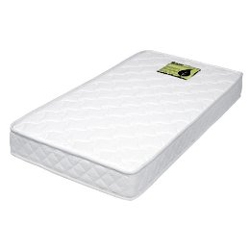
Crib basics include infant blankets and sheets, hanging mobiles, and of course a mattress that fits snugly against the side of the crib. A few crib manufacturers sell the mattress with the crib, but most are sold separately. Now parents must decide whether to purchase…[more]
When Comparing Crib Models and Styles, Choose Safety First
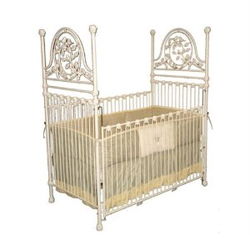
Glitzy made-to-order cribs don’t necessarily equate to a safe bed for your infant. Many, if not most, high-end cribs have no consumer safety certification readily available. Childrens products manufacturers recognized for their effective marketing techniques….[more]
Take Care when Choosing an Alternative to a Crib for Baby
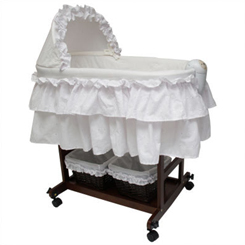
Most consumers searching for the right type of infant bed will choose a crib, but the alternatives to a traditional crib are Moses baskets, cradles and bassinets. Unlike cribs, Moses baskets and bassinets have no federal regulations to ensure their safety…[more]
Related Top 10 Lists
Top 10 Baby Cribs
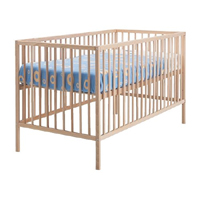
There are oodles of infant cribs out on the market and the sheer number of brands and styles can boggle the mind. Many of them are fairly homogenous with similar or identical features, but close scrutiny reveals a few key differences which make some brands… [more]
How to Save Energy with your Washing Machine
Washing machines have long been a huge contributor to families’ high energy bills. According to the Department of Energy (DOE), the average American family washes 400 loads of laundry a year. Those gallons of water and kWh of energy add up quickly and can put a dent in your wallet if you’re not careful. Luckily, today more models are available that are energy efficient, saving you money and protecting the environment at the same time. Consider these factors when selecting your next washing machine:
Front Load Models
Front load washers use considerably less water than traditional top load washers. Because the drums are horizontal, they cut water use by 40%, and the fast spinning motion tosses the clothes around enough to get most of the water out, meaning less time in the dryer. Typically front loaders have a greater capacity and can hold more clothes per cycle, cutting down the amount of loads. These models are pricier when you buy them, but over time you save more in energy costs.
Load-Sensing Models
Many newer washing machine models have automatic sensors that determine the size of the load and add the appropriate amount of water. With this feature and other smart technologies, getting the most economical use out of your washer has never been simpler.
EnergyGuide Label
The DOE puts out this invaluable comparison guide on all washer models. The EnergyGuide label lets you know exactly how much energy your machine uses, how that compares to other models, and how much energy it spends in a year.
Energy Star
A joint effort by the Environmental Protection Agency (EPA) and the DOE, Energy Star recognizes the most energy efficient and eco-friendly products on the market. An Energy Star washing machine, either top load or front load, uses up to 50% less energy than other machines.
Also remember that 90% of energy costs comes from using hot water, so use hot cycles only for the dirtiest clothes.
Reading an EnergyGuide label
Photo source: abt.com
 |
Brittany Rowland researches new developments in Appliances, Kitchen and CE products features with a vigor to which few would aspire… but someone has to do it. See more about Brittany |
Featured Washing Machine Articles
Preventing Mold and Mildew in Your Front Load Washer
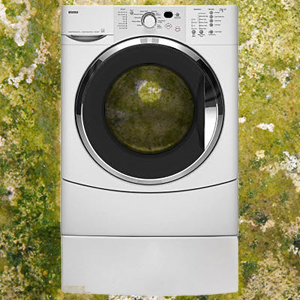
Front load washers are increasingly favored for their energy efficiency and conservation, but there is one potential issue with them that most people are unaware of: the risk of mold and mildew. Because the machines use less water, some have trouble draining away all the … [more]
Putting Your Washer on a Pedestal
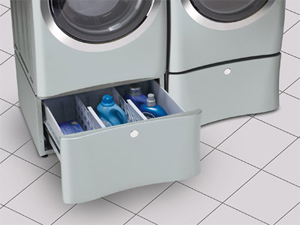
Front loaders have become a popular choice in recent years, but people quickly realized they need an easier way to load and unload the washers. Bending or kneeling down to pull out damp, heavy … [more]
What You Should Know About Washer Warranties
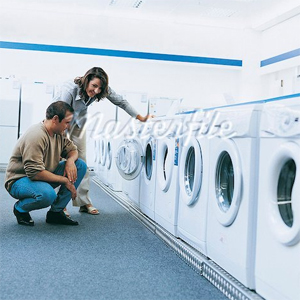
Most manufacturers of washing machines offer a one- year warranty, covering all parts and labor for the machine. After the first year, the warranty typically covers specific parts. When you’re buying a new washer, however, you’ll probably hear a sales pitch for … [more]
Related Top 10 Lists
Top 10 High Efficiency Washing Machines
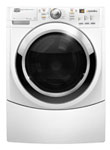
More than ever before, people are looking for ways to conserve energy and water with their washing machines. Not only is it better for the environment, it’s also better for you each month when you pay the bills. Today all the major appliance brands are offering high efficiency (HE) washers, both front loaders and top loaders. The following … [more]
Top 10 Budget Washing Machines
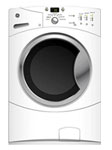
Looking for a washing machine on a tight budget doesn’t mean you have sacrifice quality or efficiency. Generally top loaders are less expensive than front loaders, but there are models in both styles that offer high efficiency and good performance for a reasonable price. Here’s an overview of ten of the … [more]
Top 10 Dryers
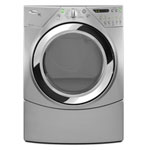
As we looked at a variety of dryers to select our top 10 models, we looked for specific features that improve and enhance the drying performance, such as: 1. Moisture sensors that are gentle on fabrics and save energy costs, 2. Large capacity tubs, 3. Useful drying … [more]
